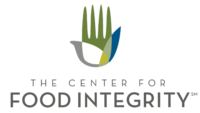Sustainability
Transparency in sustainability: key to connecting with consumers

Today, more than ever, consumers want transparency about the food they feed their families. Details about product characteristics such as calories, sugar and fat aren’t enough anymore; consumers want to know where their food comes from, how it’s made and what’s in it.
In fact, according to a 2015 report titled “A Clear View of Transparency and How it Builds Consumer Trust” from the Center for Food Integrity, consumers primarily hold food companies responsible for sharing this information with them. The study showed consumers look to food manufacturers to provide transparency about policies, practices and performance for six key aspects of food production. These aspects are the impact of food on health, animal well-being, food safety, labor and human rights, environmental impact and business ethics. The good news is, consumers want to learn more, which gives us food companies more opportunity to engage with them in a simple, clear way.
Transparency is about accounting for your activities, accepting responsibility for them and disclosing fully your performance results, whether good or bad. Transparency is an expectation for building consumer trust and loyalty. Here are some ideas for more effective and transparent communication.
• Start small: Full transparency doesn’t happen overnight. Regardless of what you do, be proactive and start small. For example, food companies face challenges consumers may not fully understand such GMOs, cage-free eggs and gestation stalls. Most of today’s consumers are at least three generations removed from agriculture and food production, so there’s a fairly significant gap between the consumer and their food. This gap increases the potential for confusion and misinformation.
If your company is attempting to manage a challenge, consider developing and sharing a simple point-of-view statement that lets your consumers know how you view the issue, how it applies to your business and how you are managing it. A little relevant and real-deal transparency can go a long way with the consumers you want to connect with.
• Know your audience. A one-size-fits-all approach doesn’t work when communicating with customers transparently. Different consumers want access to different information. For transparency efforts to have an impact, companies need to ensure the correct information reaches consumers who want it at the right time and frequency. Know your audience and tailor messages to address specific inquiries.
It’s also important to think about how the information is delivered. It’s very likely consumers will not be interested in digging through a 100-plus-page sustainability report to find a company’s position on something such as sustainable palm oil or sustainable packaging. Consumers might also find it overwhelming to surf a company’s website. In this digital age, consider launching an active, honest social media campaign. This creates a forum in which food companies invite consumers to engage in discussions on topics they are curious or concerned about.
• Be ready. Before a food company pulls back the curtains, prepare for questions such as: How will consumers respond when they hear this? Who gains from knowing this story or data? Are we just reacting to an issue or being proactive for our brand? Ask yourself why consumers are skeptical and how the information you plan to share help address their concerns.
Additionally, you will want to establish why you want to share transparently with consumers in order to gut-check the intentions of your effort. Any communication perceived as green washing, hiding or tricking will damage a company’s credibility and reputation. Try the following:
- Bullet-proof your information and data. Make sure documentation supporting any claims is available.
- Work with consumer research and marketing on your message to ensure consumers can relate.
- Know who in your organization will respond to questions and comments from consumers. If you don’t have a response for a question or comment, don’t make something up. Instead, offer to get back with the consumer with a response.
- Be honest and transparent in your conversation, but don’t engage in dialogue that is not collaborative. Sharing information with like-minded consumers is easy; naysayers are the challenge. If a conversation becomes confrontational or argumentative, offer to finish the conversation with a particular consumer or consumer group in another forum.
Food companies ready for more transparency must think beyond a package label, sustainability report or corporate website. Consumers around the world are concerned with the health and safety of the food supply chain. They are being bombarded with information about nutritional claims, handling practices, workplace conditions and environmental impact.
Think about who you are as a company and what you stand for. Consider how you developed and grew your brand. For us at Tyson Foods, our business practices and performance are grounded in our Core Values. They define who we are, what we do and how we do it. Find specific examples of how you uphold your company and business values. Share them with consumers in a way that addresses concerns, offers education and builds a solid connection. And, if you find a gap or opportunity to build consumer trust, set goals and targets for improving your performance and report your progress transparently. I don’t believe consumers are looking for food companies to be perfect; they want honesty and authenticity. NP
Looking for a reprint of this article?
From high-res PDFs to custom plaques, order your copy today!




